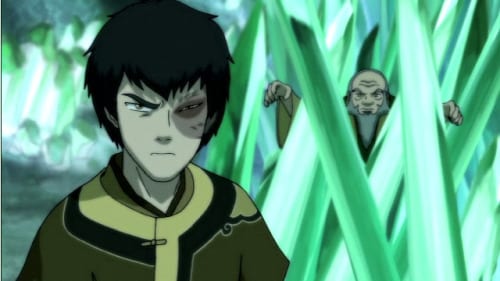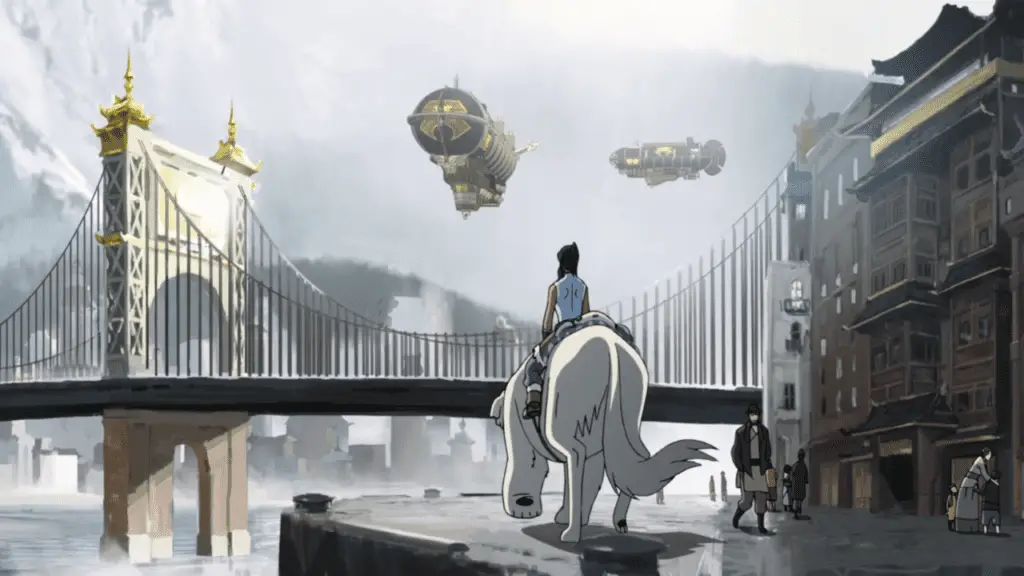Has this ever happened to you? You fall in love with a piece of media and are filled with the zeal of the converted. You want to tell the whole world about this awesome new thing that will surely change all their lives, so one brave friend takes you up on the offer, only to come back and say; “I don’t know dude, it was weird…”
“Oh no! You watched that one?”
You know, when you want to get them into Star Wars and they, bless them, decide to start at the beginning with Episode I? It’s something a friend shouldn’t let a friend do. When it comes to the Avatar franchise, the goal-posts are not set nearly so far apart as The Empire Strikes Back and The Phantom Menace, but even so, there are moments that are certainly not the universe’s best foot forward.
In an attempt to be of constant service to our readers, I’ve compiled this short list of the highest and lowest points of quality in the Avatar franchise. Though, to be real, these two shows’ sub-basement is another show’s stratosphere. If this is a rabbit hole you think you may want to dive into, these points are something to keep in mind.
Water
While many shows take a while to gain their footing, Avatar: The Last Airbender started very strong and remained so for the whole first book. I could easily consider the two-part pilot “The Boy in the Iceberg/The Avatar Returns” as a high point, and almost all of the more episodic entries are invariably fun (who doesn’t love “The Fortune Teller”?) but the first book peaked with “The Storm”. Hell, many consider it to be the peak of the franchise.
“The Storm” is structured around establishing parallels between the protagonist and the antagonist (or is he!?) by using a, well, storm as a metaphor for the past they’re trying to escape from and atone for. Its tone is mature, yet more than accessible to the show’s target audience, who can probably all relate to the hurt of having people misunderstand their intentions.
![]()
There is an obvious contender for the low point of Water, though: “The Great Divide.” Truthfully, it isn’t bad so much as it’s a little generic and predictable. A newbie watching it might think the show was a little average, but I doubt it would turn them off. The only episode where I think that is a possible danger is “Bato of the Water Tribe.” This story contains a contrived problem that leads to an over-dramatic reaction by the characters, and is wrapped up in a neat little bow at the end.
Again, it’s not bad, bad. But this show can do so much better.
Earth
The second chapter of ATLA is probably my favourite. Mostly because of Toph, but also because this is where the show really begins to show how seriously it takes its young audience by offering a subtle and not at all overly simplified view of the consequence of war. Seriously, I’m still amazed at how they pulled this off.
The most exciting and emotionally intense moments of this book come in the final chapter “The Crossroads of Destiny”. I just cannot say enough good things about this episode. The animation, especially of the super-powered bending battles, is outstanding, the plot is tight and character-driven, and perfectly motivated, and just perfect. It ends with a tone that is sad, the darkest moment of this show certainly, but also hopeful for the future. I think I may take a break from writing to rewatch it.

Alright, I’m back…
It’s a literal struggle to find a low-point for Earth, but let’s be honest; “Avatar Day” was a bit weird. As much as I enjoy the sight of Sokka cosplaying as an Avatar-verse Sherlock Holmes, the whole thing is just…silly. These villagers really need to get over the whole Kyoshi thing. And find a less dumb legal system. The Wheel of Punishment is a great joke I guess, but you can skip this one and lose nothing.
Fire
Stuff’s got real!! The Gaang is in the territory of the enemy and they will need all of their skills and all of the relationships they’ve formed to prevail and save the world from the evil Fire Lord!
The main plot is masterful, with the heartbreaking false climax in “Day of the Black Sun” and the finale, which tied together many loose thread while still teasing the future of the franchise. But the last book also made time for several stand-alone episodes that focused on particular major characters and the progress of their own arcs.
“The Boiling Rock” two-parter is by far the best of the side trips, and for me has always been the most memorable part of the final book. It might not be comparable the the juggernaut of “Sozin’s Comet”, but what can be? The finale can be a little too intense for me sometimes, frankly. “The Boiling Rock” is just damn fun. Who doesn’t love a character driven prison break?
On the other hand, the two other side stories, “The Painted Lady” and “Sokka’s Master” feel a little less successful. They feel much more like jarring asides the the main plot— which is supposed to have an urgency to it, after all— and they both kind of strain suspension of disbelief. (Sokka made a katana in an afternoon? Seriously?) Neither are bad episodes, but they’re not representative of the quality of Book 3.
“The Blind Bandit” was awesome, though.
Air
New Avatar, and a whole new world to explore. The Legend of Korra couldn’t boast ATLA’s bump-free opening book, but I was sucked into Republic City the moment I saw it. Where the first series existed in a timeless world that emphasized the cyclical nature of time and eternity (though the analogy with Meiji-era Japan and the Qing Dynasty isn’t meaningless,) Korra’s world is dynamic and always looking for the next thing that will bring progress and change.
The world-building of Air is engaging enough to somewhat distract you from the half-baked nature of the Equalist plot and it’s attempt to comment on social inequality. (How was that issue magically solved by finding out Amon was a fraud again?). And the world building is best on display in the opener “Welcome to Republic City/Leaf in the Wind.”

It just looks amazing. The city is lived in and complicate, even if its government structure makes no sense. We feel exactly what Korra is feeling when she wants to bust out of her glorified prison and explore.
Speaking of Korra’s feelings… you know what never works? A freaking love triangle. Also bringing your plot with magical terrorists to a grinding halt so you can talk about sports for a whole episode. “The Spirit of Competition” is entertaining enough on its own, but taken in the context of the season, it’s a little infuriating. Still, I suppose it got real at the end, and then the plot finally kicked into high gear, so it’s not all a loss.
Spirits
Oh, Book 2 of Korra. This is one case where the highs and lows thing really does apply.
The high of this book is so high: “Beginnings” is one of my favourite hours of television. The animation is distractingly beautiful, I adore the percussive Chinese Opera inspired soundtrack, I am a sucker for wacky creation myths, and who could be sad to see lion turtles? The story of Raava and Vaatu added a good deal to the mythos of the Avatar-verse, and really put all of Korra’s actions throughout the series into perspective of the awesome scope it has.
14/10 would watch again.
The rest of Book 2, though…it’s mediocre. The main plot, the conflict between the southern and northern Water Tribes, makes no damn sense. Unalaaq is a boring villain, and poor Tenzin just spends the whole season failing at everything. And why is everyone blaming Korra for starting a war? Ugh! If I had to choose a lowest moment, it would probably be the 693th time Bolin’s clearly abusive relationship with Eska was played for laughs.
A few of the new characters, Bumi, Kya, and Varrick especially, are a light in the dark, and “Beginnings” means you can’t just skip the book, so… we have to suffer through this one, I guess.
Change
Book 3 is pretty much perfect. To be brutally honest, if the show had ended after Book 2, The Legend of Korra wouldn’t ever be anything particularly special. Passable, sure, but it would leave few people as puddles of feels all over the floor. Then Change came along and there we were. I still may not be over it.
For a high point I was torn between my eventual choice and “The Metal Clan,” because the introduction of the Beifong extended family was just a seminal moment for the show. In the end, however, “Long Live the Earth Queen” is a better microcosm for the whole book. Not only is the title almost cruelly macabre, given the events of the episode, but those very events also let us know that this will be a show that pulls no punches with its audience, even if the writers really broke out the thesaurus to avoid using the word “kill”.

There’s also the airship that launched this site’s favourite ship, and Mako and Bolin just bro-ing it up in jail. What a wonderful episode.
This season is so great that I can’t think of an episode to be less than in love with. The only thing I could find to complain about what the voice actor who voiced the main antagonist. I’m sure Henry Rollins is the most wonderful guy in the world, but he plays Zaheer in a way that never lets you forget that it’s an aging punk rocker standing inside of a booth with headphones on reading off of a piece of paper.
It doesn’t break the book, not even close, but I do wince every so slightly every time he speaks.
Balance
Book 4 was clearly rushed and took many risks, but the end results are so emotionally impactful that it’s hard to even see the flaws in the story. (What flaws, anyway?) In this book, Korra heals from trauma (and it takes her longer than two days,) Mako gets a new boyfriend, and Zhu Li gets to tell Varrick to stick it.
The high point could be anything, but my favourite is “Operation Beifong”. I just love this crazy family. I love Suyin and her self-centred myopia. I love Huan and his banana statue. I love how Bataar Sr. does not care about gender roles. I love how much they love each other. This episode is their time to shine. The story is fun, the emotional beats work, and the fight scenes continue to knock my socks off.

Then there is “Remembrances”. Which is not bad. It’s little other than clips of really good episodes, after all. But a clip show is never going to be the most impressive thing ever, and only one of the three framing devices was even a little bit interesting. Not that I don’t appreciate Asami giving Korra a hot beverage… There are perfectly understandable reasons that this episode ended up the way it did, but you can only judge what you see on the screen.
***
And so there is the best and the worst. If you disagree, or have your own thoughts on the ups and downs of the franchise, head over to The Fandomentals forum.

